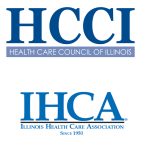
$108.1 billion: the state economic impact of Illinois hospitals and health systems
Illinois’ more than 200 hospitals and nearly 40 health systems generate a total impact of $108.1 billion annually on the state’s economy, according to a new report, Illinois Hospitals and Health Systems: Crucial for Community Health and Economic Stability, released today by the Illinois Health and Hospital Association (IHA).
One in every 10 Illinois jobs is in healthcare, with the state’s hospitals and health systems employing about 298,000 people and generating about 493,000 direct and indirect jobs. Hospitals provide good-paying jobs and substantial benefits for a wide range of workers. They spur additional economic activity through spending on goods, services and capital improvements.
At the same time, hospitals contribute significantly to community health and well-being. They have valiantly cared for communities during COVID-19, dedicating resources to the public health crisis and persevering during the pandemic’s most challenging months. Hospitals are promoting well-being from the ground up, supporting communities through diabetes and asthma initiatives, addressing housing and food insecurity, and deploying community health workers to connect residents with needed healthcare services.
“Illinois hospitals and health systems provide needed healthcare around the clock, they strengthen local economies and employ local residents, and they lead and fund initiatives to improve individual and community health,” says IHA President and CEO A.J. Wilhelmi. “Illinois hospitals are crucial to communities—a role we’ve seen magnified many times by the pandemic and the incomparable care they’ve provided.”
Among the report’s key findings:
One in 10 Illinois jobs is in healthcare.
For every hospital job in Illinois, 1.4 jobs are created in other sectors.
For every dollar hospitals and health systems spend, an additional $1.40 is generated in state and local economies.
Estimates of the Illinois hospitals’ economic benefits were based on the Regional Input-Output Modeling System II (RIMS-II) developed by the U.S. Bureau of Economic Analysis (BEA). The Final Demand multipliers, obtained from BEA RIMS-II, were applied to 2020/2021 Medicare cost report data of hospital jobs and spending to obtain the “ripple” effect of jobs and spending throughout the economy.






